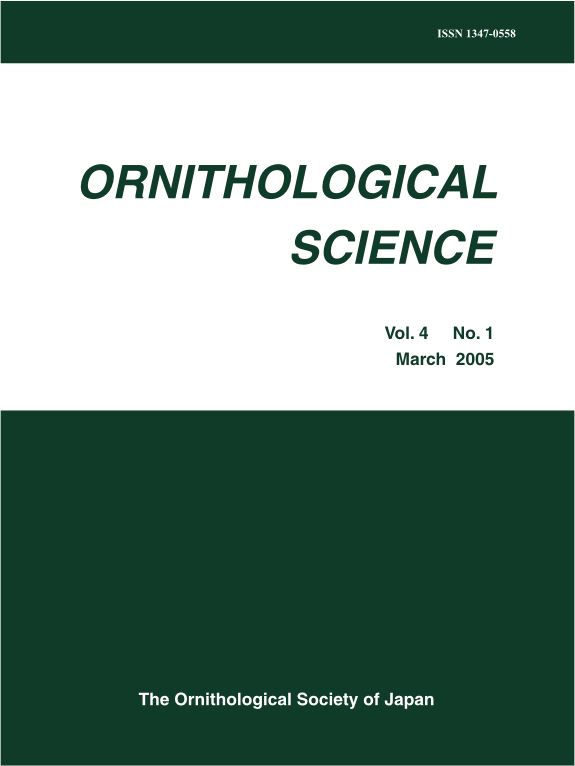Volume 5, Issue 2
December
Displaying 1-16 of 16 articles from this issue
- |<
- <
- 1
- >
- >|
SPECIAL FEATURE Ecology and conservation of birds of prey
-
2006 Volume 5 Issue 2 Pages 149-150
Published: 2006
Released on J-STAGE: February 01, 2007
Download PDF (30K) -
2006 Volume 5 Issue 2 Pages 151-156
Published: 2006
Released on J-STAGE: February 01, 2007
Download PDF (1110K) -
2006 Volume 5 Issue 2 Pages 157-163
Published: 2006
Released on J-STAGE: February 01, 2007
Download PDF (114K) -
2006 Volume 5 Issue 2 Pages 165-169
Published: 2006
Released on J-STAGE: February 01, 2007
Download PDF (239K) -
2006 Volume 5 Issue 2 Pages 171-176
Published: 2006
Released on J-STAGE: February 01, 2007
Download PDF (61K) -
2006 Volume 5 Issue 2 Pages 177-186
Published: 2006
Released on J-STAGE: February 01, 2007
Download PDF (95K)
ORIGINAL ARTICLES
-
2006 Volume 5 Issue 2 Pages 187-191
Published: 2006
Released on J-STAGE: February 01, 2007
Download PDF (568K) -
2006 Volume 5 Issue 2 Pages 193-198
Published: 2006
Released on J-STAGE: February 01, 2007
Download PDF (577K) -
2006 Volume 5 Issue 2 Pages 199-209
Published: 2006
Released on J-STAGE: February 01, 2007
Download PDF (234K)
SHORT COMMUNICATIONS
-
2006 Volume 5 Issue 2 Pages 211-216
Published: 2006
Released on J-STAGE: February 01, 2007
Download PDF (497K) -
2006 Volume 5 Issue 2 Pages 217-220
Published: 2006
Released on J-STAGE: February 01, 2007
Download PDF (95K) -
2006 Volume 5 Issue 2 Pages 221-225
Published: 2006
Released on J-STAGE: February 01, 2007
Download PDF (1497K) -
2006 Volume 5 Issue 2 Pages 227-229
Published: 2006
Released on J-STAGE: February 01, 2007
Download PDF (56K) -
2006 Volume 5 Issue 2 Pages 231-235
Published: 2006
Released on J-STAGE: February 01, 2007
Download PDF (569K)
COMMENTS
-
2006 Volume 5 Issue 2 Pages 237-242
Published: 2006
Released on J-STAGE: February 01, 2007
Download PDF (59K) -
2006 Volume 5 Issue 2 Pages 243-247
Published: 2006
Released on J-STAGE: February 01, 2007
Download PDF (53K)
- |<
- <
- 1
- >
- >|
